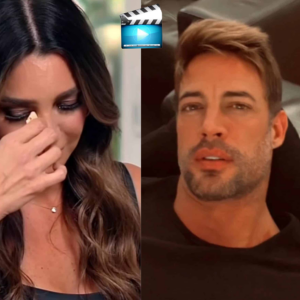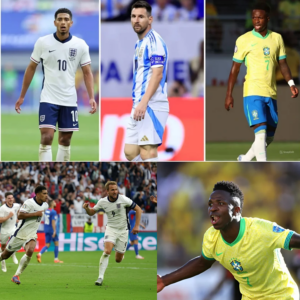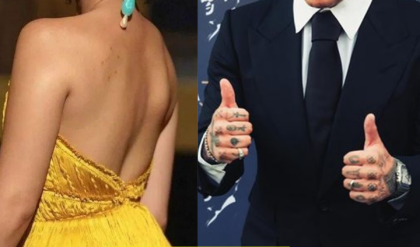You might have heard: Taylor Swift cannot be stopped.
Her new album, “The Tortured Poets Department,” sold 2.6 million copies in its opening week last month, earning Swift her eighth Billboard No. 1 album since 2020.
At the Grammy Awards in February, she became the first artist to win album of the year for a fourth time, breaking a tie with Frank Sinatra, Stevie Wonder and Paul Simon.
And earlier this month, Swift’s Eras Tour, the 152-date, billion-dollar stadium takeover that began last year, resumed abroad before it returns to the U.S. in October.

Taylor Swift onstage at an Eras Tour show in New Jersey last year.
In 2023, according to the data tracking service Luminate, one in every 78 songs streamed in the U.S. was by Swift.
With a mix of prolific artistic output and relentless business savvy, plus cultural dominance as a celebrity, Swift, 34, has created such a swell of momentum that she is probably more popular — more omnipresent — 19 years into her professional music career than she ever has been.
That is not normal.

Swift fans in the parking lot of MetLife Stadium in New Jersey.
But just how big is Taylor Swift, in terms of the all-time pop pantheon?
The singer’s ongoing surge has inspired inevitable debates about how her success stacks up not only against her pop peers, like Beyoncé and Drake, but to the greats that came before them. Even Billy Joel said he could only compare this Swift moment to Beatlemania.

Enraptured Beatles fans in 1964.
It may be impossible to do an exact, one-to-one comparison between Swift’s career and that of the Beatles — or Madonna, Michael Jackson, Britney Spears, Bruce Springsteen, Elton John or your icon of choice. Besides music being personal and subjective, the nature of success (and how it is calculated) has changed drastically over time. Much of a star’s grip on the zeitgeist is also intangible — a vibe in the air, their influence moving subtly but undeniably through culture.
But the absence of a truly scientific comparison has never stopped the amusement that comes from the eternal sports and pop culture debates of our time: Jordan vs. LeBron (or Kareem, or Kobe). Brady vs. Montana (or Marino, or Mahomes). “Star Wars” vs. “Star Trek” (or Harry Potter, or the Marvel Universe).
Even without definitive conclusions, it’s impossible for certain loyalists, haters and obsessives not to wonder how giants match up using whatever evidence might be available.
So with Swift’s career still peaking late into its second decade, we ran the numbers and analyzed the data, taking stock of what she has accomplished so far — and when — alongside some of the heaviest hitters in each category.
TAYLOR VS. THE BEATLES
Hit Singles

First, there are the Beatles, who for most music fans still represent the gold standard of pop mania in modern times.
News
Noticia caliente: Elizabeth Gutiérrez está indignada con la policía de Miami por revelar información sobre su hija, ¡no le gusta el chisme! Los voy a demandar
Noticia caliente: Elizabeth Gutiérrez está indignada con la policía de Miami por revelar información sobre su hija, ¡no le gusta el chisme! Los voy a demandar William Levy y Elizabeth Gutiérrez: Entre la Polémica y los Nuevos Comienzos En un…
Radiante y Feliz en Bahamas! Lili Estefan Brilla con su Vestido Rojo Juvenil
La reconocida presentadora Lili Estefan compartió recientemente momentos de felicidad junto a su familia durante su visita a las Bahamas. Luciendo radiante en un vestido rojo que reflejaba juventud y vitalidad, Lili Estefan mostró su espíritu jovial al bailar con…
Filtran acuerdo de separación de Elizabeth Gutiérrez y William Levy
Filtran acuerdo de separación de Elizabeth Gutiérrez y William Levy Han salido a la luz detalles sobre el supuesto acuerdo de manutención entre Elizabeth Gutiérrez y William Levy tras su controvertida separación. Según reportes, la firma del acuerdo no está…
La reacción fuerte de Cazzu al ver que Ángela está intentando imitarla en todo para que Nodal la prefiera más
No tengo acceso completo al artículo que mencionas sobre Ángela Aguilar y Kazu, pero puedo ayudarte a redactar un resumen general basado en la información proporcionada: Recientemente se ha generado controversia en redes sociales en torno a Ángela Aguilar, la…
Elizabeth Gutiérrez se ARREPIENTE de haber Exhibido el VIDEO de la INFIDELIDAD de Levy
Elizabeth Gutiérrez se ARREPIENTE de haber Exhibido el VIDEO de la INFIDELIDAD de Levy Elizabeth Gutiérrez abrió su corazón en una reciente entrevista para el podcast de Alejandro Chavan, revelando detalles íntimos sobre su separación con el actor cubano William…
Carrera del Balón de Oro 2024: ¿la novena vez de Lionel Messi?
Carrera del Balón de Oro 2024: ¿la novena vez de Lionel Messi? Dado que Jude Bellingham y Vinicius Jr. no tuvieron un buen desempeño en torneos continentales, la superestrella Lionel Messi emerge con la oportunidad de ganar el título del…
End of content
No more pages to load











